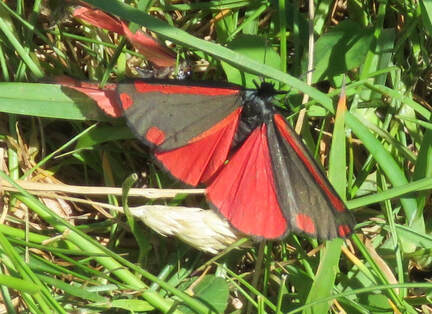 Cinnabar moths mating, South Walney
Cinnabar moths mating, South Walney As for the Latin that links cinnabar moth to ragwort, Tyria Jacobaeae to Senecio Jacobaeae, I have not yet discovered what the name signifies. I see the moth as scarlet, a friend sees it as crimson. Does Tyria suggest the ancient Tyrian dye which yields purple? And what of Jacobaeae? There's an evolutionary relationship between moth and ragwort, an exchange of toxins. Cinnabar caterpillars feed on ragwort, can strip it of leaves. apparently without killing the plant?
Images show several different cinnabar moths we found during the day, interspersed with eider duck, with linnet and reed bunting and a wealth of flowers. Now showing on this website's gallery.
10 August 2021. BBC World Service: In The Studio: In Vivid Colour.
A cinematographer, for whom light and colour are of the essence, in conversation with Michael Harding who makes paints organically, in traditional ways. They speak of Turner and artists who all made their own paints. Vermilion comes from cinnabar. Mines in Almaden, Spain, were worked by the Romans- men were sentenced to the mines since they were likely to die of mercury poisoning. To make vermilion, mercury is mixed with canary yellow sulphur which soaks up the mercury. The mixture turns grey-black, like charcoal powder. Add potassium hydroxide and heat, stir, and gradually the colour becomes dark green, then burnt sienna, then crimson and vermilion. It's alchemy. Mercury has been produced at Almaden for 2,,000 years. It's a World Heritage Site.
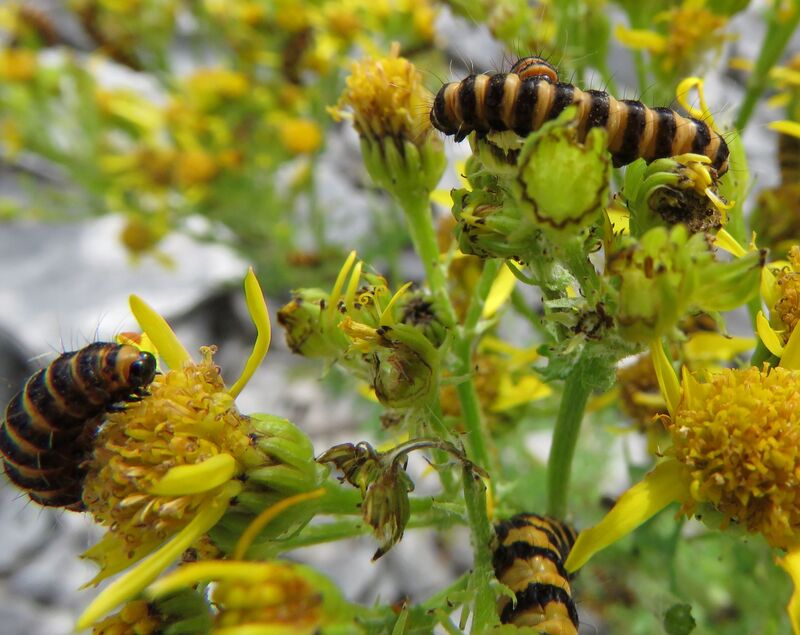
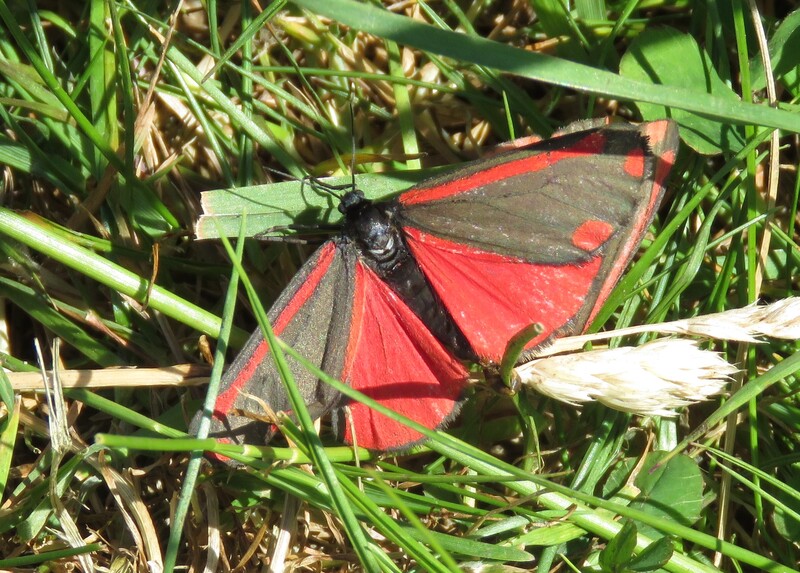
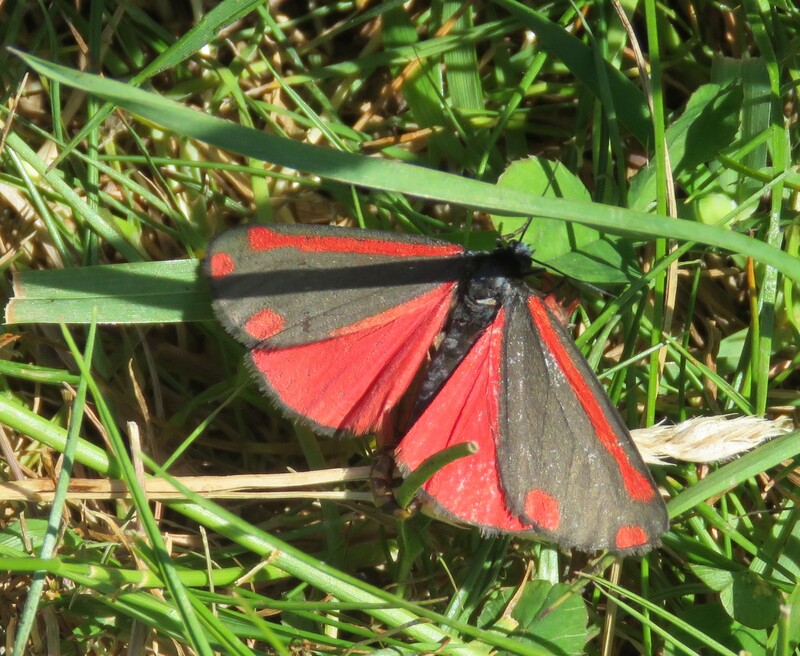
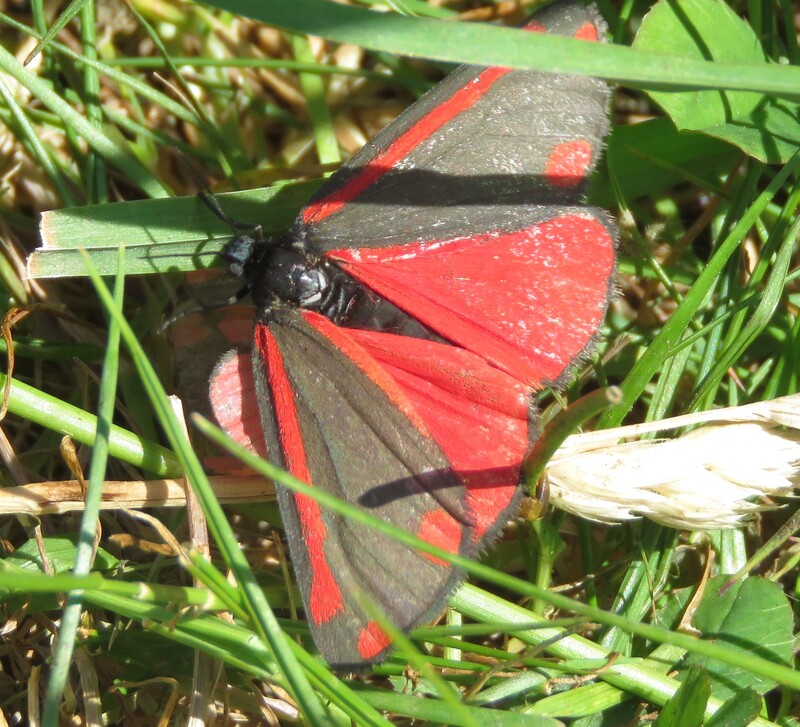
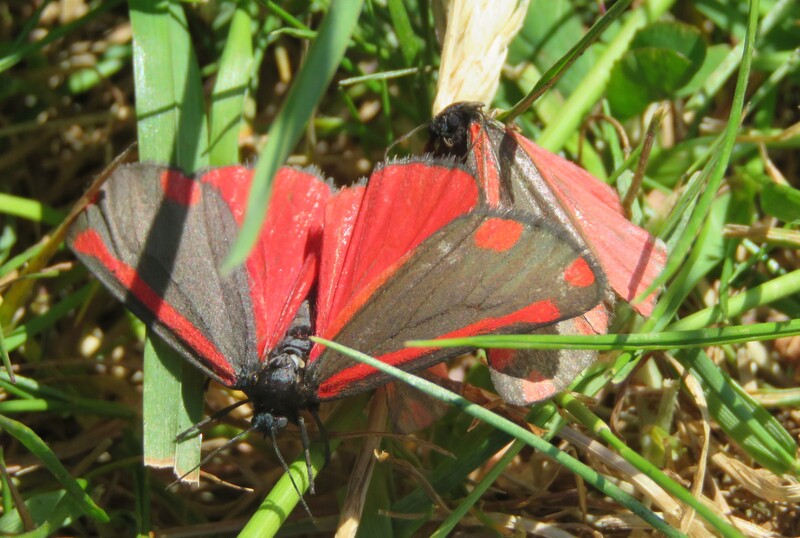
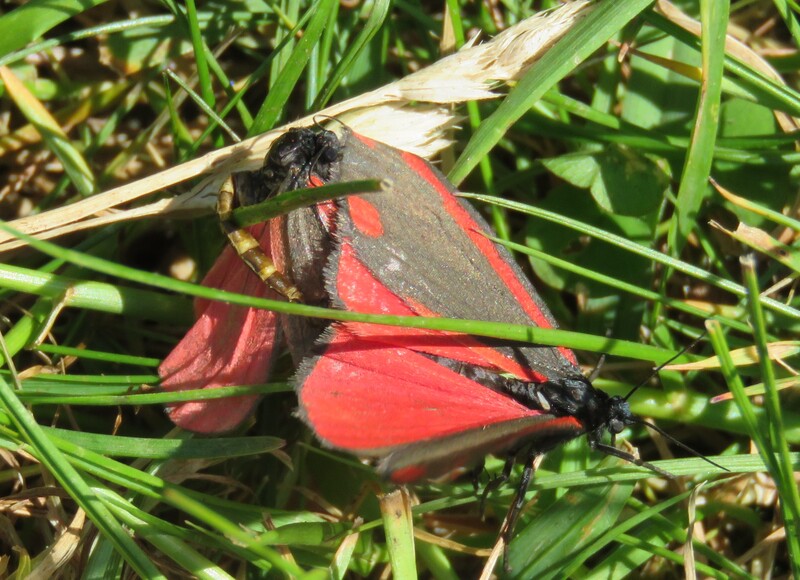
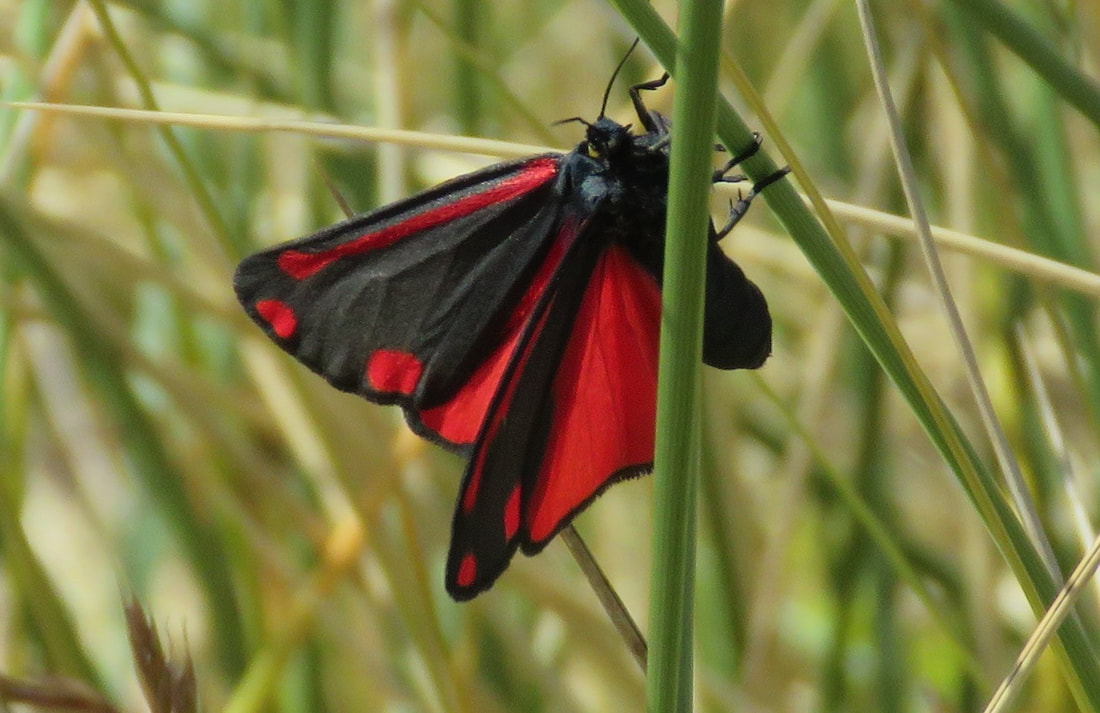
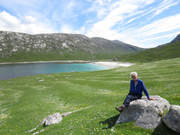
 RSS Feed
RSS Feed